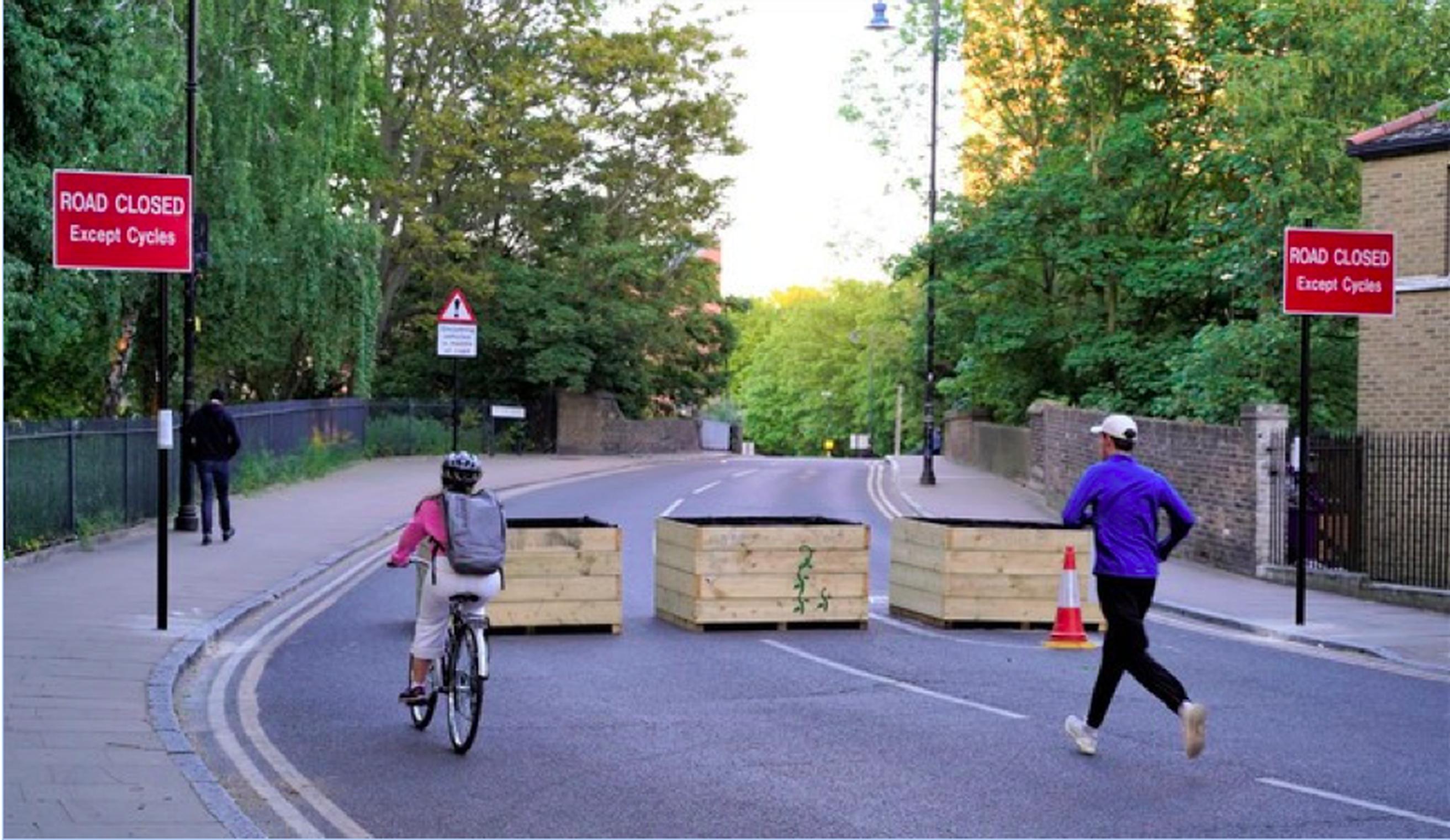

The new national vision for walking and cycling – ‘Gear Change’ – focuses on the health benefits of active travel. Boris Johnson rightly states, “clean air will be to the 21st century what clean water was to the 19th”. But the document is perhaps less forthright about the direct harm driving has on other people and the need for us to drive much less, and to make driving less convenient, cheap, and easy.
By driving, we pose a plethora of harms to other people. Traffic remains the leading cause of death for children aged 5 to 19 in the UK (J Read, iWalk, 2017). Long-term exposure to fine particulate matter (PM2.5 and produced by vehicles) at even quite small levels is linked to higher Covid-19 mortality rates. As traffic increases, people socialise less with their neighbours, are less likely to form friendships and have higher stress levels. We need measures to cut driving akin to the laws used to make smoking less appealing and prevent passive smoking.
Low Traffic Neighbourhoods (LTNs) are one of the tools used to do just that; they stop rat-running and open streets up for local people – including children – to get around on foot, scooter or cycle. They can even enable playing out, if done with care. With Covid-19 the reduction of traffic bought people onto their streets to cycle, run, clap for the NHS and chat. LTNs help lock some of those benefits into our lives.
A simple solution is to stop through-traffic using a modal filter – a planter or bollard. This can be done in a matter of days under an emergency notice – such as Old Ford Road in Tower Hamlets. Or it can be done with an experimental order. No prior consultation is required for either method.
The experimental order is a ‘suck it and see’ approach. Filters can be trialled for 6 or 12 months, allowing residents to experience the change in their street. It also allows for the wider impacts such as displaced traffic onto the surrounding roads or traffic evaporation to be assessed and monitored; by trialling them you get to see what the real impacts are.
Some have expressed concern that the changes will cause congestion. But research suggests that this does not happen1. People find driving less convenient with LTNs so drive less, not more. One of the main outcomes of Project Centre’s landmark Mini-Holland scheme in Walthamstow was more walking (as well as more cycling). Everyone can still access their home by car; it is just they can also access it safely by cycle or on foot too.
One complaint against LTNs is they cause ‘gentrification’. It is true that in Walthamstow house prices and footfall for businesses rose; but that is an argument for prioritising deprived areas for LTNs rather than a reason for inertia and inaction in the face of dirty, polluting streets.
LTNs are about so much more than cycling. They mean people can talk to their neighbours without the roar of traffic, children can play out and people can step safely into the carriageway if they need to physically distance themselves from others.
Gone are the days when the sight and sound of lots of cars conjured up the idea of prosperity. With Zoom and laptops, prosperity is found on traffic-free streets with cafes and parks or offices and schools accessed by safe cycle routes. And with the reduction in commuting, it makes sense to create residential streets that are not blighted by the noise passing of motor traffic. LTNs help create peaceful streets conducive to working at home. We are in a period of disruption; LTNs offer a way to try out not just a new way of doing transport, but a new way of living.
Lucy Marstrand is Healthy Streets Adviser at the Project Centre
1 Aldred, R., Croft, J. and Goodman, A., 2019. Impacts of an active travel intervention with a cycling focus in a suburban context: One-year findings from an evaluation of London’s in-progress mini-Hollands programme. Transportation research part A: policy and practice, 123, pp.147-169
TransportXtra is part of Landor LINKS
© 2026 TransportXtra | Landor LINKS Ltd | All Rights Reserved
Subscriptions, Magazines & Online Access Enquires
[Frequently Asked Questions]
Email: subs.ltt@landor.co.uk | Tel: +44 (0) 20 7091 7959
Shop & Accounts Enquires
Email: accounts@landor.co.uk | Tel: +44 (0) 20 7091 7855
Advertising Sales & Recruitment Enquires
Email: daniel@landor.co.uk | Tel: +44 (0) 20 7091 7861
Events & Conference Enquires
Email: conferences@landor.co.uk | Tel: +44 (0) 20 7091 7865
Press Releases & Editorial Enquires
Email: info@transportxtra.com | Tel: +44 (0) 20 7091 7875
Privacy Policy | Terms and Conditions | Advertise
Web design london by Brainiac Media 2020